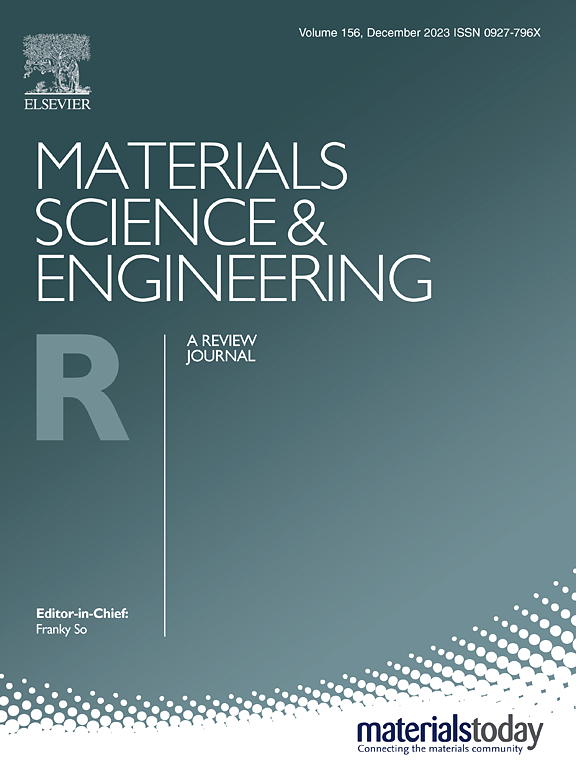锌空气电池双功能电催化剂:设计优化和原位表征的综合综述
IF 31.6
1区 材料科学
Q1 MATERIALS SCIENCE, MULTIDISCIPLINARY
引用次数: 0
摘要
可充电锌空气电池(ZABs)以其优越的能量密度、安全性、成本效益和环境可持续性而脱颖而出,使其成为一种有前途的储能解决方案。它们的性能取决于空气电极上的氧还原反应(ORR)和析氧反应(OER),但受到动力学缓慢、双功能受限、贵金属依赖性和腐蚀的阻碍。这篇综述探讨了最新的双功能电催化剂,重点是提高ORR和OER活性的策略。它批判性地考察了ZAB的基本原理、反应机制和催化剂设计的创新——优化微/纳米结构、电子结构、结合能和表面性质,以提高活性、选择性和耐久性。在微观尺度上对电子、几何和协同效应的详细分析揭示了催化性能的增强。原位表征技术强调揭示电极-电解质界面动力学,表面重建和机制途径。最后,概述了关键挑战和未来的研究方向,推动了下一代高性能ZABs的发展。本文章由计算机程序翻译,如有差异,请以英文原文为准。
Bifunctional electrocatalysts for Zn–air batteries: A comprehensive review of design optimization and in-situ characterization
Rechargeable Zinc-Air Batteries (ZABs) stand out for their superior energy density, safety, cost-effectiveness, and environmental sustainability, making them a promising energy storage solution. Their performance depends on the oxygen reduction reaction (ORR) and oxygen evolution reaction (OER) at the air electrode but is hindered by sluggish kinetics, limited bifunctionality, precious metal dependence, and corrosion. This review explores cutting-edge bifunctional electrocatalysts, focusing on strategies that enhance ORR and OER activity. It critically examines ZAB fundamentals, reaction mechanisms, and innovations in catalyst design—optimizing micro/nano-architectures, electronic structures, binding energies, and surface properties to improve activity, selectivity, and durability. A detailed analysis of electronic, geometric, and synergistic effects at a microscopic scale sheds light on catalytic performance enhancement. In situ characterization techniques are emphasized to unravel electrode-electrolyte interfacial dynamics, surface reconstruction, and mechanistic pathways. Finally, key challenges and future research directions are outlined, driving the next generation of high-performance ZABs.
求助全文
通过发布文献求助,成功后即可免费获取论文全文。
去求助
来源期刊

Materials Science and Engineering: R: Reports
工程技术-材料科学:综合
CiteScore
60.50
自引率
0.30%
发文量
19
审稿时长
34 days
期刊介绍:
Materials Science & Engineering R: Reports is a journal that covers a wide range of topics in the field of materials science and engineering. It publishes both experimental and theoretical research papers, providing background information and critical assessments on various topics. The journal aims to publish high-quality and novel research papers and reviews.
The subject areas covered by the journal include Materials Science (General), Electronic Materials, Optical Materials, and Magnetic Materials. In addition to regular issues, the journal also publishes special issues on key themes in the field of materials science, including Energy Materials, Materials for Health, Materials Discovery, Innovation for High Value Manufacturing, and Sustainable Materials development.
 求助内容:
求助内容: 应助结果提醒方式:
应助结果提醒方式:


